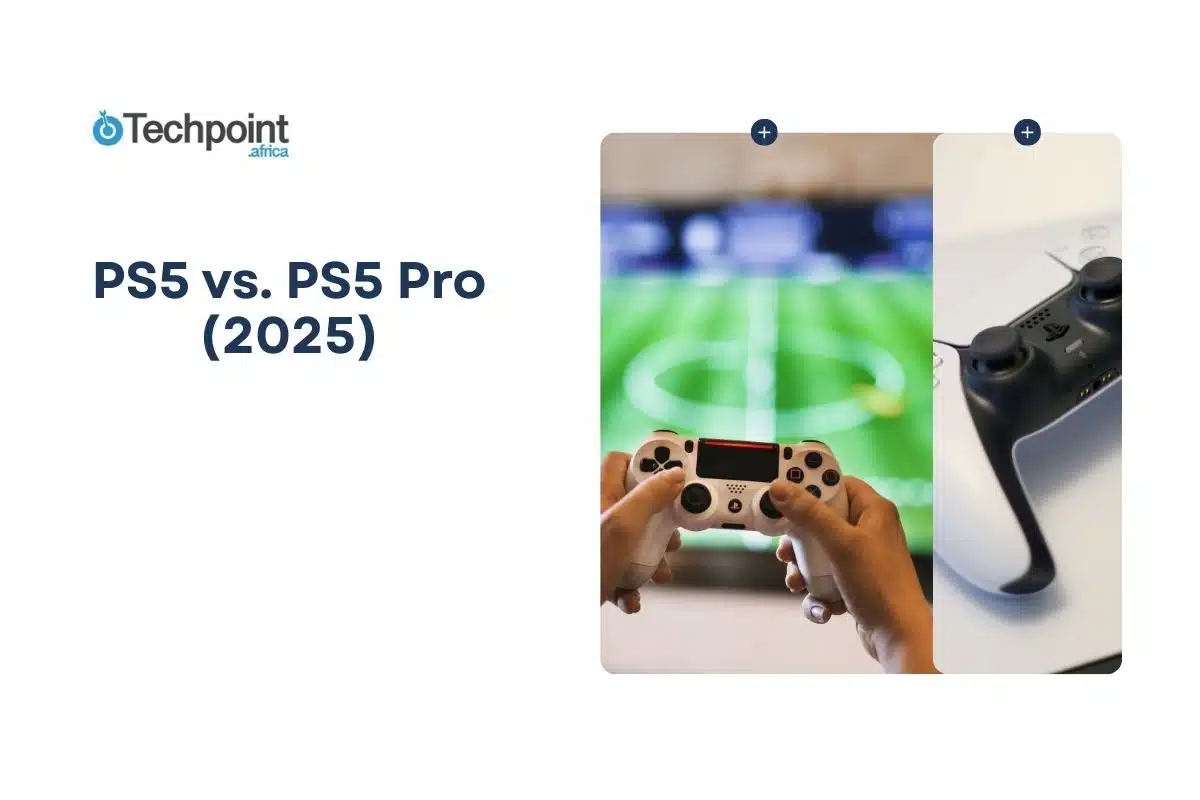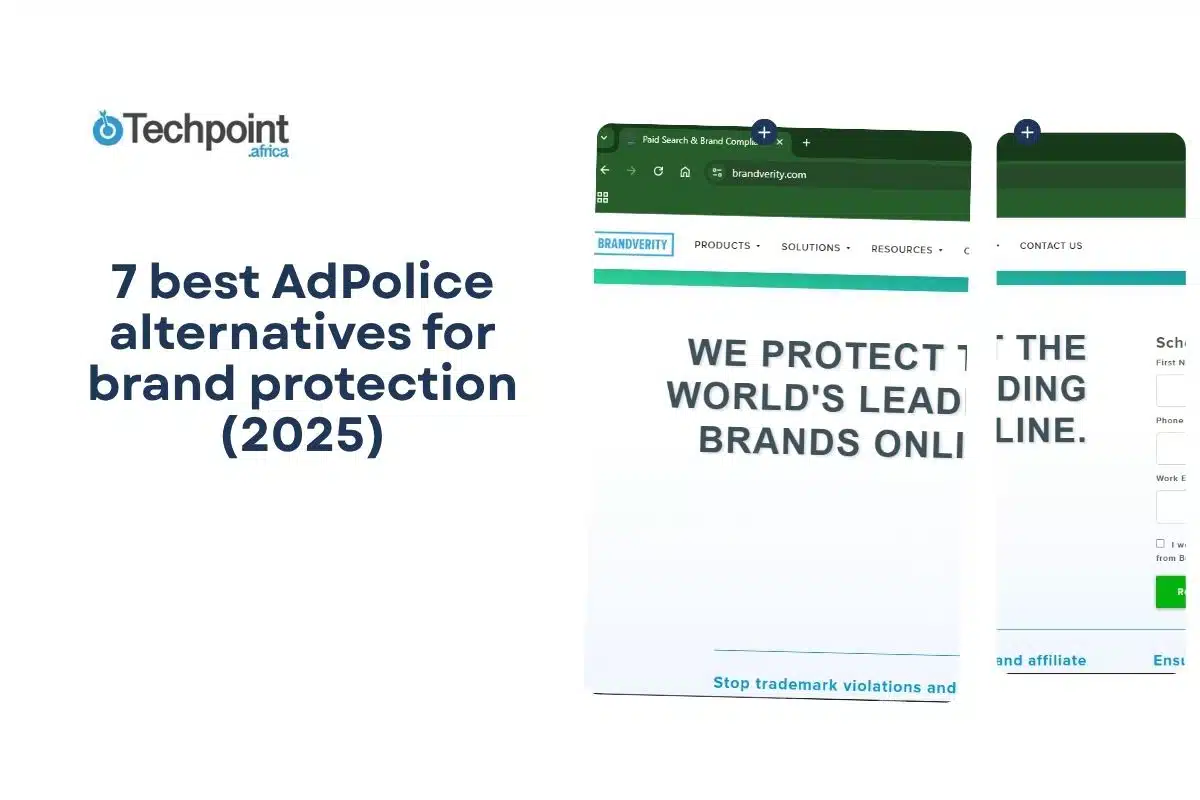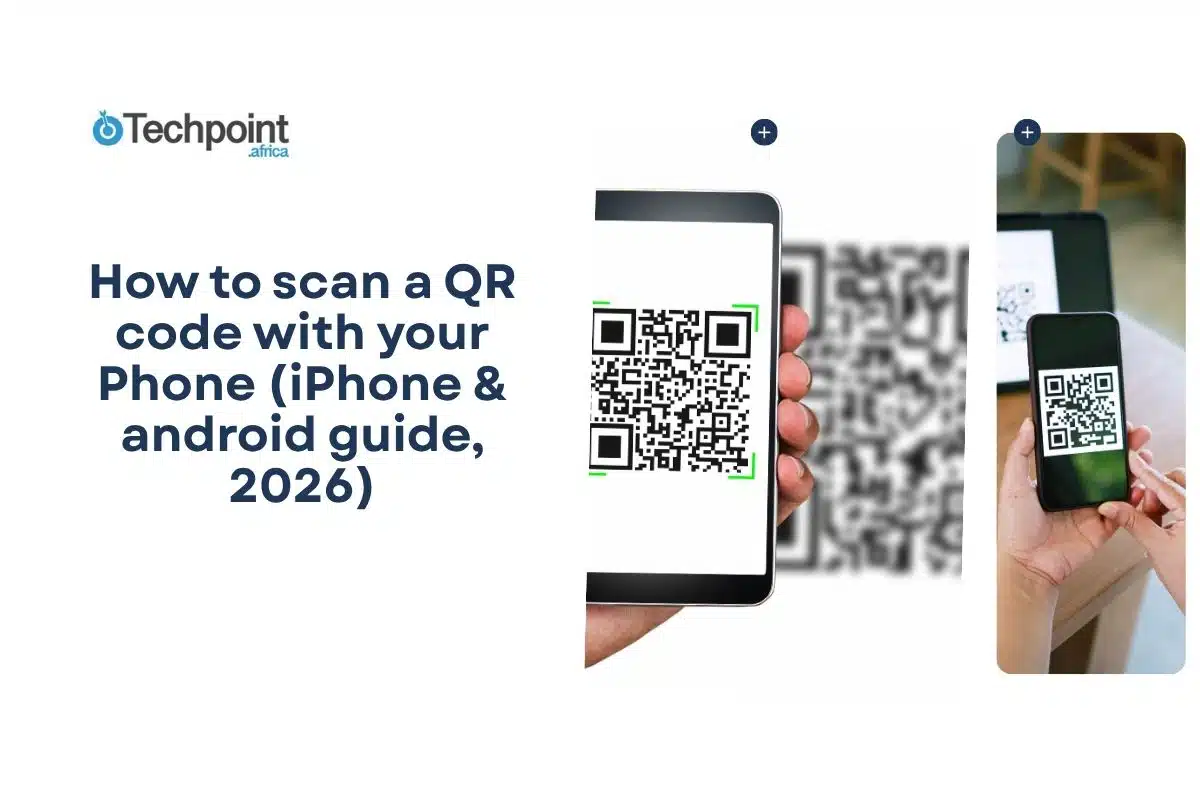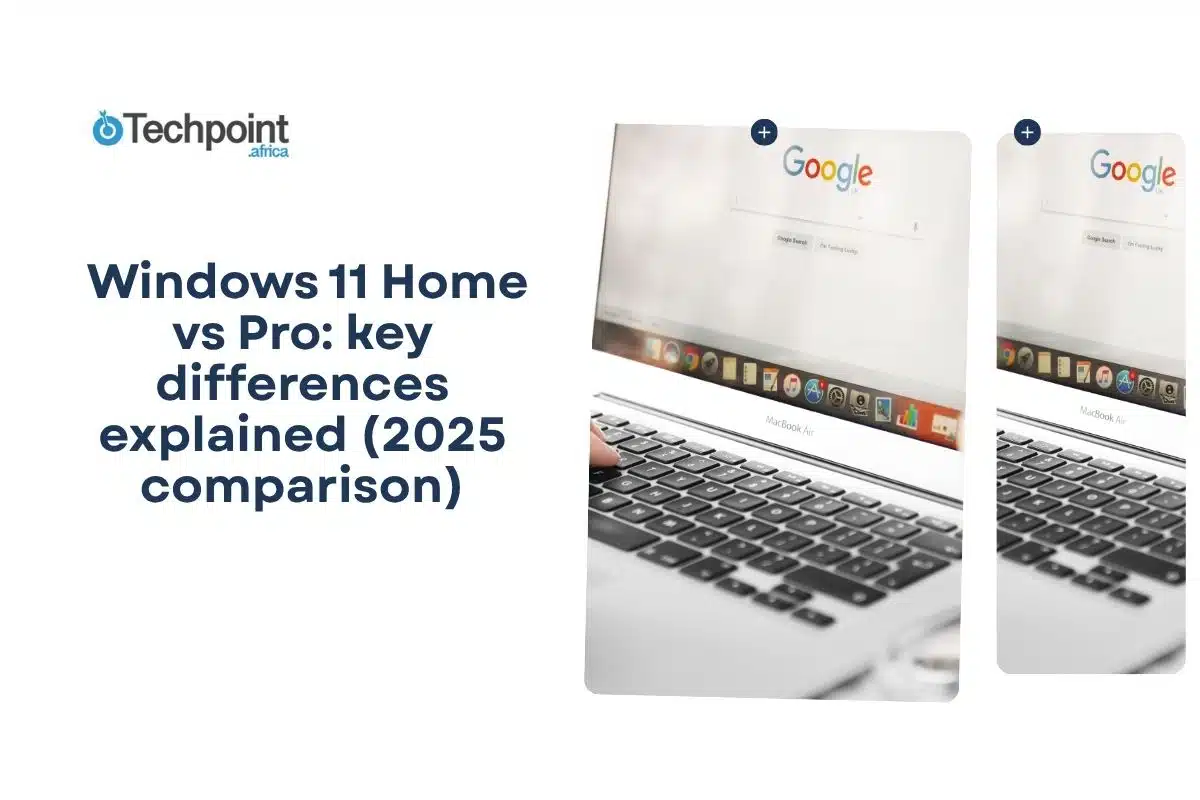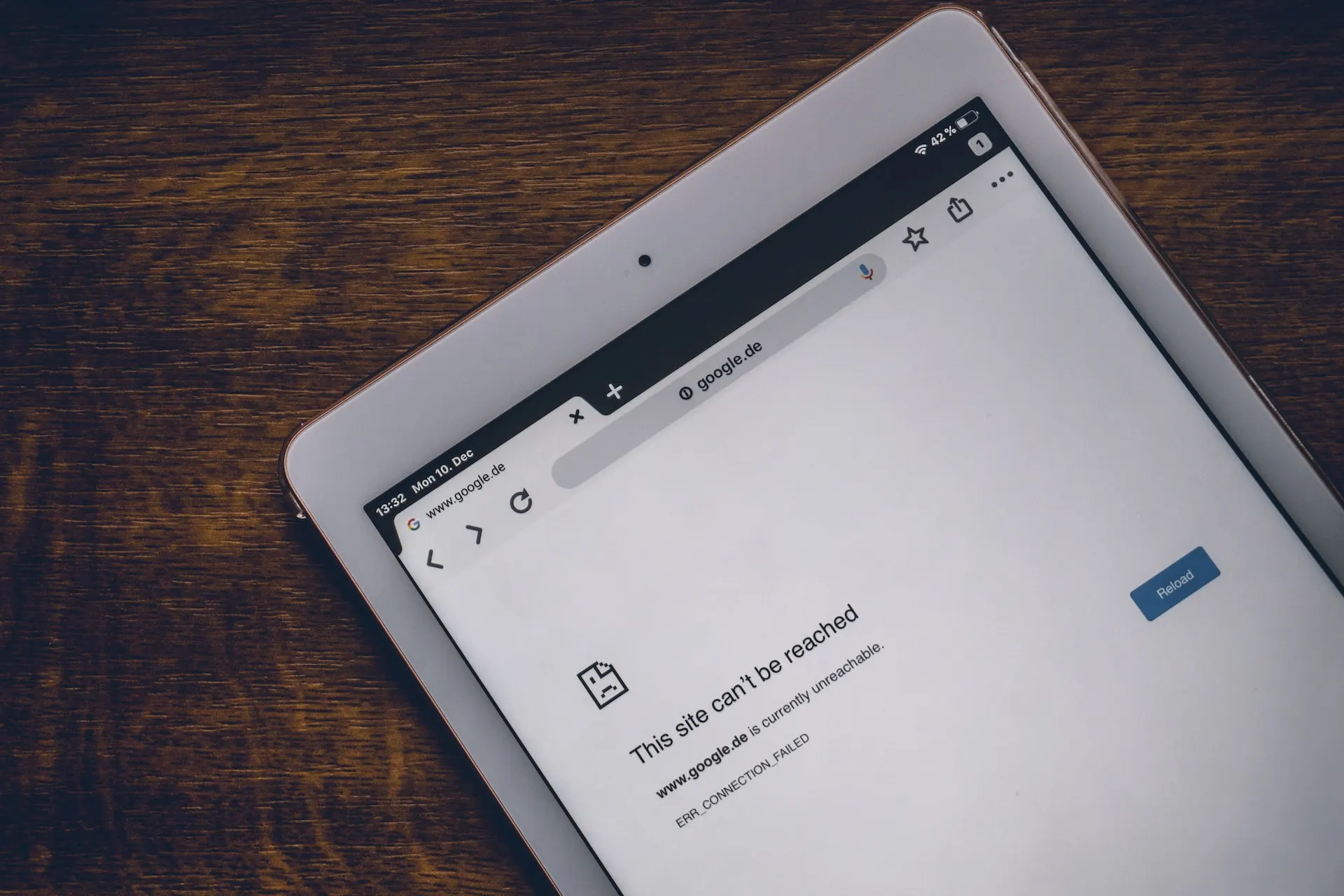I’m not what you’d call a hardcore gamer, but I log enough hours on my PlayStation to care when Sony drops new hardware. So when the PlayStation 5 Pro was finally announced, my first reaction was: Okay, here we go!
Now, nearly a year later, I’m comparing them.
The original PS5 landed back in November 2020, ushering in the current generation of consoles. In 2023, Sony followed up with the Slim, a sleeker shell with the same guts and slightly larger storage. Four years after the initial launch, we got the PS5 Pro, the first genuine mid-generation refresh that actually promises more power.
Why four years later?
Well, TVs keep getting bigger, gamers continue to ask for smoother 4K performance, and developers are building increasingly demanding titles. With 8K starting to float into marketing conversations, it was clear Sony didn’t want to get left behind.
The big question is, do you really need the PS5 Pro, or is the standard PlayStation 5 still enough?
I decided to pit PS5 vs PS5 Pro head-to-head to find out who this upgrade is really for. Is it just another gimmick for hardcore gamers, or does it genuinely enhance your favorite games’ visuals and performance?
Stick with me. By the end of this comparison, you’ll know which console is the more brilliant buy for your gaming style, budget, and how much future-proofing you care about.
TLDR: Key takeaways from this article
- Both consoles are excellent. The PS5 delivers outstanding 4K gaming, while the PS5 Pro adds extra horsepower for sharper visuals and smoother frame rates.
- The Pro comes packed with enhanced features like advanced ray tracing, AI upscaling (PSSR), Wi-Fi 7, and double the storage (2TB). However, it comes at a price, up to $200 more upfront, plus an extra cost if you want the disc drive.
- Game support is limited. Only about 50+ titles are currently PS5 Pro Enhanced, so most games look similar across both systems.
- Choose PS5 Pro if you have a high-end TV, care about future-proofing, or play performance-heavy titles, and stick with PS5 if you’re a casual gamer, rely on discs, or just want the best value without extra spend.
What are PS5 and PS5 Pro?
Sony’s console family is now split between two siblings: the PS5 and the PS5 Pro. The former is the original next-gen machine most gamers are familiar with, while the latter is a mid-generation refresh that promises extra horsepower, sharper visuals, and more storage, but with a significantly higher price tag.
| Feature | PS5 Pro | PS5 |
| Price | $749.99 | Digital Edition: $499.99;Disc Edition: $549.99. |
| Dimensions (HxWxD) | 15.2 × 3.5 × 8.5 in / 388 × 89 × 216 mm | Disc Edition: 15.4” x 4.1” x 10.2″ / 390 mm x 104 mm x 260 mm;Digital Edition: 15.4” x 3.6” x 10.2″ / 390 mm x 92 mm x 260 mm |
| Weight | 6.8 lbs / 3.1 kg | Disc Edition: 9.9 lbs / 4.5 kg; Digital Edition: 8.6 lbs / 3.9 kg |
| Storage capacity | Custom 2TB SSD | Custom 1TB SSD |
| Storage expansion | M.2 NVMe SSD slot; external storage via USB | M.2 NVMe SSD slot |
| Connectivity | WiFi 7, Ethernet, Bluetooth 5.1 | WiFi 6, Ethernet, Bluetooth 5.1 |
| CPU | 8-core / 16-thread AMD Zen 2 | 8-core AMD Zen 2 |
| GPU | 16.7 TFLOPs, AMD Radeon, RDNA-based graphics engine | 10.28 TFLOPs, AMD Radeon, RDNA-based graphics engine |
| Memory/RAM | 16GB GDDR6 + 2GB DDR5 | 16GB GDDR6 |
| Upscaling | PSSR (PlayStation Spectral Super Resolution Upscaling) | N/A |
| Ports | 1× HDMI 2.1, 1× Ethernet, 2× USB-C, 2× USB-A | 1× HDMI 2.1, 1× Ethernet, 2× USB-C, 2× USB-A |
PS5
The PlayStation 5 (now also available in its Slim version) remains the baseline console most people are familiar with. First launched five years ago, it remains a beast of a machine, balancing great performance, gorgeous visuals, and one of the best controllers ever made in gaming.
The PS5 comes in two forms:
- A base model with an Ultra HD Blu-Ray optical disc drive.
- A lower-cost Digital Edition without the optical drive.
If you’re just stepping into the current-gen PlayStation, the base model still delivers an excellent experience without breaking the bank.
Pros
- Gameplay up to 4K/120fps: Delivers fluid, high-quality visuals when paired with supported titles and TVs.
- DualSense controller with haptics: Still the most immersive controller on the market, with adaptive triggers and next-gen rumble.
- Great UI: A sleek, responsive interface that makes navigation quick and intuitive.
Cons
- Bulky size (OG model): The original PS5 is massive, making it tricky to fit into smaller entertainment setups.
- Limited usable storage: The 825GB/1TB SSD fills up quickly once you install modern AAA games, often forcing you to manage space.
- Backward compatibility capped at PS4: Unlike Xbox consoles, the PS5 only supports one generation back, limiting your retro library.
PS5 Pro
The PlayStation 5 Pro, released in November 2024, is Sony’s mid-generation refresh. It doesn’t reinvent how games are played, but it does give you more muscle under the hood. This includes a faster processor with performance boosts that matter if you’ve got a big 4K TV, care about smoother frame rates, or simply want the most powerful console in the PlayStation lineup. Additionally, it was upgraded to 2TB of storage and features an AI-powered upscaling trick called PSSR (PlayStation Spectral Super Resolution), which makes supported games look crisper without compromising performance.
Pros
- Performance and visual upgrades over the PS5: Games look sharper and run smoother across the board.
- PSSR upscaling: AI-powered upscaling delivers both crisp visuals and steady frame rates.
- 120Hz displays: Gameplay feels ultra-fluid if your TV/monitor supports high refresh rates.
- 2TB of storage: Twice the breathing room compared to the standard PS5.
- Wi-Fi 7 support: Faster, more reliable online play and downloads.
Cons
- Visual upgrades aren’t revolutionary: Better graphics, yes, but not quite a generational leap.
- Disc drive and stand sold separately: Out of the box, it’s a little less complete than you’d expect at this price.
- Steep price tag: It’s the most expensive PlayStation yet, and that makes the value harder to justify.
Pricing: PS5 vs PS5 Pro
Price is where the most significant gap between the two consoles is most noticeable, and honestly, it’s the deciding factor for most people.
- PS5 (digital edition): $499.99.
- PS5 (disc edition): $549.99.
- PS5 Pro (digital edition only): $749.99.
That’s a $200–$250 jump (roughly a 40% increase) just to step into Pro territory. And that’s before add-ons. Since the PS5 Pro is digital-only at its base price, you’ll need to buy the disc drive and vertical stand separately if you want the same out-of-the-box flexibility as the launch PS5. With those extras, the total cost rises to approximately $830.
This makes the PS5 Pro the most expensive PlayStation console ever released, pricier than the original $599 PS3 launch model and more expensive than an Xbox Series X. For a mid-generation refresh, that’s a steep ask.
If you’re budget-conscious, the standard PS5 delivers incredible value and will handle all current-gen titles just fine. The PS5 Pro is for power users willing to pay a premium for sharper visuals, smoother frame rates, and a bit more future-proofing.
Winner: PS5 (better value overall)
Design and build
How does the standard PS5 differ from the PS5 Pro in their overall design and build?
Aesthetic and size
At first glance, the PS5 and PS5 Pro share the same bold, futuristic white-and-black aesthetic. Both consoles look sleek and high-end, but the Pro adds some extra flair. It carries over the curvy design language of the PS5, but with additional black stripes across the middle, giving it a slightly more aggressive look.
Dimension-wise, here’s where they stand:
- PS5 (Disc Edition): Height of 15.4” (390 mm), width of 4.1” (104 mm), depth of 10.2″ (260 mm), and weight of 9.9 lb (4.5 kg).
- PS5 (Digital Edition): Height of 15.4” (390 mm), width of 3.6” (92 mm), depth of 10.2″ (260 mm), and weight of 8.6 lb (3.9 kg).
- PS5 Pro: Height of 15.2” (388 mm), width of 3.5” (89 mm), depth of 8.5” (216 mm), and weight of 6.8 lbs (3.1 kg).
Customization
Like the PS5 Slim, the PS5 Pro supports removable faceplates, so you can swap colors and designs to match your setup. This is a step up from the original launch PS5, which didn’t offer the same level of personalization.
Connectivity
The Pro doesn’t reinvent the port setup. You’ll still find:
- Front: USB-C ports for controllers and accessories
- Rear: USB-A ports and an Ethernet jack
Both systems also support DualSense controllers with haptic feedback and adaptive triggers, still some of the most immersive features in gaming today.
Digital-only shift
One notable change is that the PS5 Pro is digital-only by default. The disc drive is a separate add-on, the same modular one used with the PS5 Slim. While this offers flexibility, it may frustrate collectors or players with a library of PS4 discs.
The PS5 still feels more straightforward, as it ships with a built-in disc drive (on the standard model), eliminating the need for extra purchases, and its bold, original design remains iconic. The PS5 Pro, on the other hand, looks sharper with its extra black accents and offers more flexibility with swappable faceplates and a modular disc drive. However, that modularity comes at the cost of convenience and additional cost.
Winner: PS5 (simpler, fully equipped out of the box)
Specification
While both consoles share the same SSD architecture and overall design philosophy, the PS5 Pro features a more powerful GPU and enhanced memory bandwidth.
In practice, this means:
- Smoother gameplay in demanding next-gen titles.
- Shorter loading times across the board.
- Better VR performance, especially with PlayStation VR2™.
CPU
While the PS5 Pro retains the same 8-core AMD Zen 2 architecture as the standard PS5, it introduces a “High Frequency Mode” that increases the CPU’s clock speed from 3.5 GHz to 3.85 GHz, accounting for a roughly 10% boost.
This upgrade is more nuanced than the GPU improvement. You should not expect significantly faster boot times or loading speeds, as those are primarily tied to the SSD, which sees only a minor speed increase. However, this higher clock speed provides valuable headroom for game logic, physics, AI, and CPU-bound tasks. In supported games, this can result in more stable frame rates in complex scenes and a tangible performance improvement for titles that require high CPU power.
The key takeaway here is that the Pro’s CPU is enhanced, not entirely unchanged, and its benefits are specifically tied to overcoming CPU bottlenecks in gameplay, rather than system-level speed.
Winner: PS5 Pro (for the slight increase in clock speed).
GPU
The PS5 Pro’s biggest flex is its upgraded GPU (also known as the graphics card). Sony claims it has 67% more compute units and 28% faster memory, resulting in around 45% faster rendering than the standard PS5. On paper, that’s a major leap forward. The Pro delivers 16.7 TFLOPS of graphical power, compared to the PS5’s 10.28 TFLOPS. That means sharper visuals and smoother frame rates in games that are optimized for it.
PS5 delivers excellent 4K gaming with a stable 60fps or higher in most titles, while PS5 Pro excels with higher frame rates and sharper visuals, but only for Pro Enhanced games (currently about 50 titles). When it comes to backward compatibility, Sony’s “Game Boost” means better resolution and stability for over 8,500 PS4 games, though in real-world testing, the improvements aren’t always dramatic.
In short, the PS5 Pro is a graphics powerhouse, but its benefits depend heavily on whether the games you play are on the Pro Enhanced list. If not, the experience will feel very similar to the base PS5.
Winner: PS5 Pro (narrowly, but only if you’re playing supported titles. Otherwise, it’s a tie).
Ray tracing
Ray tracing is the magic trick that makes lighting, shadows, and reflections in games look like they belong in the real world. Instead of faking light, it simulates how it naturally bounces around surfaces, turning puddles, glass, and shiny armor into reflective eye candy.
In PS5, ray tracing has been supported since launch, but performance depends on how developers optimize their games. Some titles handle it well, while others feel watered down compared to PC graphics cards. PS5 Pro takes things further with advanced ray tracing hardware, delivering richer reflections, more dynamic lighting, and sharper shadows in supported titles. Some games are already confirmed to showcase these upgrades.
If you’re playing a game optimized for the Pro, you’ll notice brighter neon streets reflecting in puddles, more convincing glass windows, and better overall visual realism. It’ll do all this while maintaining smooth frame rates. That’s a big deal for immersion. The catch is that only select titles are optimized for the Pro, so the benefits aren’t universal across the PlayStation library. The standard PS5 still holds up well, but the Pro’s upgraded visuals are hard to ignore if you’re after the best lighting effects.
Winner: PS5 Pro (for offering more advanced and immersive ray tracing).
AI upscaling
Upscaling is the process of making a game look sharper on your TV than it actually runs natively. Think of it like stretching a photo without making it blurry, except with way more math and machine learning.
PS5 uses standard software-based upscaling and anti-aliasing. It does the job, but the results depend heavily on how developers optimize their games. PS5 Pro introduces PlayStation Spectral Super Resolution (PSSR), Sony’s AI-powered upscaler. It’s similar to Nvidia’s DLSS on PC, meaning the console can render a game at a lower resolution and then “fill in the gaps” with machine learning to make it look like native 4K, while still maintaining high frame rates.
In practice, PSSR means you’ll get sharper visuals and smoother performance simultaneously. Fast-paced titles like shooters and racers benefit the most, as they maintain detail without sacrificing speed. If you have a 4K or 8K TV, this is one of the features that really separates the Pro from the base PS5. That said, PSSR only works on PS5 Pro Enhanced games, so the improvement won’t apply universally.
Winner: PS5 Pro (for introducing AI-driven PSSR, which is a genuine leap forward in console upscaling).
Wireless connectivity
Controllers
Both the PS5 and PS5 Pro come bundled with the excellent DualSense wireless controller. While the Pro doesn’t sneak in the premium DualSense Edge (a missed opportunity, frankly), the standard DualSense is still one of the best controllers in gaming. With adaptive triggers, immersive haptics, and even spatial audio passthrough via the 3.5mm jack, you won’t feel shortchanged here.
Wi-Fi
Where the PS5 Pro does stand apart is in Wi-Fi tech.
- PS5 supports up to Wi-Fi 6, which is fast and reliable enough for most gamers.
- PS5 Pro has upgraded to Wi-Fi 7 (802.11be), which means even faster downloads, lower latency, and more stable online play, provided your home router also supports Wi-Fi 7.
This future-proofs the Pro for a world of 100GB+ game downloads and cloud-connected gaming. The downside is that most households do not yet have Wi-Fi 7 routers, so the benefits may not be immediately noticeable.
Winner: PS5 Pro (thanks to its adoption of Wi-Fi 7).
Storage
One of the biggest differences between the PS5 and the PS5 Pro is the amount of storage space available for your games.
- PS5: The launch model shipped with 825GB of storage, while the Slim upgrade increased that to 1TB. It sounds like plenty until you install a couple of massive AAA titles; one Call of Duty can eat up a third of that space.
- PS5 Pro: Doubles the storage with a 2TB SSD. For digital-first gamers or anyone juggling large installs, that extra breathing room is a huge quality-of-life boost.
Both systems still support expandable NVMe SSDs, so you’re not locked into the built-in storage. But with the Pro, you’ll be deleting and reinstalling a lot less often right out of the box.
Win: PS5 Pro.
Optical drive
This is the point where Sony’s decisions received mixed reactions.
- PS5: Available in a Disc Edition that comes with a built-in optical drive. Pop in your physical discs, watch Blu-rays, or dust off your PS4 library, all without spending extra.
- PS5 Pro: Digital-only by default. If you want disc support, you’ll need to buy Sony’s separate drive for around $80. That bumps the total cost of the Pro well past $800, making it the most expensive PlayStation console to date.
For digital-first gamers, this isn’t a big deal. But if you’ve already invested in physical games or just prefer having a shelf full of cases, the Pro feels like a step backward.
Winner: PS5 (for convenience and value out of the box).
Performance summary
Sony’s specs and promises paint a picture of meaningful upgrades across graphics, speed, and stability.
Here’s what stands out:
Graphics and processing power
The PS5 Pro features a more powerful GPU, a faster CPU, and up to three times better ray-tracing capabilities than the base PS5. That translates to more realistic lighting, smoother shadows, and richer worlds. Add in PlayStation Spectral Super Resolution (PSSR), Sony’s new AI-powered upscaling tech, and you’ve got a system that can deliver higher frame rates and sharper images without maxing out the hardware.
Backward compatibility boost
Sony is also introducing PS5 Pro Game Boost, which enhances performance for over 8,500 backward-compatible PS4 games, even without developer patches. That could mean higher resolutions and steadier frame rates for older titles, breathing new life into your existing library.
8K and AV features
Like the standard PS5, the Pro technically supports 8K output and HDR10; however, in reality, true 8K gaming is not yet available, as 8K content remains rare. Dolby Atmos is supported for gaming and Blu-ray playback.
On the audio side, expect more of what made the PS5 shine: muscular, immersive sound through its Tempest 3D Audio Engine. Sony’s bespoke system already impressed with spacious, room-filling effects, and the Pro’s added horsepower could push it even further.
Gaming experience
In real-world gameplay, both consoles load lightning-fast thanks to SSDs. But the Pro edges ahead with smoother frame pacing and cleaner VR visuals, especially in titles optimized for Pro hardware. For VR enthusiasts, that sharper experience may be a tipping point.
Cooling and efficiency
The PS5 Pro’s upgraded cooling system helps it sustain higher frame rates over longer sessions, avoiding the thermal throttling that sometimes nudged early PS5 models. Long-haul gaming should feel smoother and more consistent on the Pro.
Accessories and compatibility
The good news is that your DualSense controllers, headsets, charging docks, and other PS5 accessories will all work seamlessly with the Pro. Sony’s ecosystem stays intact, so upgrading doesn’t mean starting over.
Generally, the PS5 Pro is more powerful, smoother, and future-proofed. Casual gamers may not notice night-and-day differences, but for enthusiasts and VR players, the upgrades are significant.
Things to consider when choosing between PS5 and PS5 Pro
Before making the jump, it’s worth asking yourself a few key questions:
1. What kind of display do you own?
If you game on a 4K or 8K TV, the Pro will better showcase your screen’s potential. On a 1080p display, though, you may not notice much difference.
2. Are you a competitive or performance-focused gamer?
The Pro’s higher frame rates and sharper visuals can give you an edge in fast-paced games. If you’re mostly into casual or story-driven titles, the standard PS5 still shines.
3. Do you plan to dive into VR?
The PlayStation VR2™ benefits from the Pro’s extra horsepower, offering smoother, cleaner visuals.
4. How important is value to you?
The regular PS5 delivers a nearly identical experience for a much lower price, especially if you’re fine without the Pro’s premium perks.
5. Do you want to future-proof your setup?
If you’d like your console to feel powerful for as long as possible, the Pro’s upgraded specs and Wi-Fi 7 support give it more longevity.
6. What’s your budget?
At $200+ more (plus extra if you want a disc drive), the PS5 Pro is the priciest PlayStation ever. If cost is tight, the base PS5 is easier to justify.
7. How big is your digital library?
The Pro’s 2TB SSD means fewer storage headaches compared to the PS5’s 1TB (or 825GB on older units). If you like installing multiple massive titles, the Pro saves you from constant deletion.
8. Do you still buy physical discs?
The standard PS5 (Disc Edition) plays them out of the box. The Pro requires a separate add-on drive, making it less friendly for collectors.
9. How soon do you plan to upgrade again?
If you tend to keep consoles for a full generation, the Pro may age better. If you upgrade often, the base PS5 is plenty.
Who should buy which console?
Upgrade to the PS5 Pro if you:
- Own a 4K or 8K TV and want to maximize visuals.
- Play competitive or performance-heavy games where smoother frame rates give an edge.
- Plan to dive deep into PlayStation VR2™, since the Pro runs VR titles more smoothly.
- Prefer a digital-first library and need more storage (2TB SSD).
- Care about future-proofing with AI upscaling (PSSR), stronger ray tracing, and Wi-Fi 7.
- Don’t mind paying extra (including an add-on disc drive if you need one).
Stick with the PS5 if you:
- Are casual gamers satisfied with the already excellent 4K performance and frame rates?
- Don’t want to pay extra; the base PS5 delivers great value at a lower cost.
- Still rely on physical discs, since the PS5 has a built-in drive.
- Mostly play non-optimized games, as only about 50 titles currently take full advantage of the Pro.
- Don’t need the “latest and greatest,” as the standard PS5 still feels next-gen and fast.
Key insights and market trends
Here are some things to take note of:
Why Sony’s mid-gen upgrade exists
Sony is refining the wheel with the PS5 Pro, not reinventing it. Mid-generation refreshes are now part of the console cycle, designed to keep hardware relevant as games grow more demanding and TVs leap from 4K to 8K. The Pro exists to bridge that gap, offering smoother visuals and performance without forcing a full console generation shift.
Adoption of Pro models
History suggests the Pro models don’t outsell base consoles but serve a dedicated niche. Enthusiasts and competitive players adopted the PS4 Pro, while the standard PS4 dominated the mainstream. Expect a similar trend here; the PS5 Pro will likely appeal to tech enthusiasts, streamers, and players chasing every pixel, but the standard PS5 will remain the best-seller.
Developer support
The big question is whether developers will consistently optimize for the Pro. Currently, only about 50 games are confirmed to have enhancements, which limits their overall appeal. But if history is any guide, developers usually start treating the more powerful hardware as the new baseline. If that happens, features like advanced ray tracing and AI upscaling on the Pro could gradually become the norm.
Long-term outlook for console generations
The PS5 Pro also signals where console gaming is headed. With AI-driven upscaling, Wi-Fi 7, and massive SSDs, it’s clear Sony is preparing for longer console cycles where incremental upgrades matter more than “next-gen leaps.” Instead of a clean PS6 break in a few years, we may see more Pro-style revisions that stretch the lifespan of each generation.
Conclusion
After examining the specs, features, and trade-offs, it’s clear that both the PS5 and PS5 Pro are excellent consoles; they simply serve slightly different gamers.
If you’re the kind of player who craves the absolute best visuals, smoother frame rates, and future-proof tech like AI upscaling and Wi-Fi 7, the PS5 Pro makes sense. It’s a powerhouse designed for enthusiasts with 4K/8K displays, VR ambitions, and the budget to match.
But for most players, the standard PS5 still hits the sweet spot. It delivers fantastic 4K performance, a built-in disc drive option, and a lower price, making it a more practical choice, especially if you’re not chasing cutting-edge graphics on every title.
At the end of the day, it comes down to how you play, what you value, and what you’re willing to spend. Whichever you choose, you’re getting one of the best gaming experiences available right now, and Sony has made sure of that.
FAQ about PS5 vs PS5 Pro
1. Is the PS5 Pro worth the extra $200?
It depends on your setup and play style. If you own a 4K/8K TV, play graphically intense games, or want future-proof tech, the Pro is worth considering. If you’re more casual, the standard PS5 still delivers excellent performance.
2. Will all PS5 games work on PS5 Pro?
Yes. Every PS5 game will run on both the PS5 and the PS4. However, only about 50+ titles currently take advantage of the Pro’s enhanced features.
3. Can you transfer saves between consoles?
Absolutely. Your saves, trophies, and digital library transfer seamlessly between PS5 and PS5 Pro via PlayStation Cloud or local transfer.
4. Do I need a special TV to see benefits?
You don’t need one, but to get the most out of the Pro (like sharper 4K visuals or 8K support), a high-end TV helps. On a standard 1080p TV, you’ll see fewer differences.
5. Does PS5 Pro improve loading times?
Not really. Both consoles utilize the same SSD architecture, resulting in almost identical load times. The improvements are mainly noticeable in graphics and frame rates.
6. Will games look different on the PS5 Pro?
Yes, but only if they’re optimized for it. Enhanced titles may feature better lighting, ray tracing, and smoother frame rates. Non-optimized games will look about the same.
7. Will my current PS5 accessories work with the Pro?
Yes. Controllers, headsets, charging docks, and other accessories are all cross-compatible.
8. Can both consoles play the same games?
Yes. Both the PS5 and PS5 Pro run the same library of PlayStation 5 titles.
9. Is the PS5 Pro worth it for casual gamers?
Probably not. If you don’t have a high-end TV or care much about advanced visuals, the standard PS5 will feel more than enough, and save you money.
Disclaimer!
This publication, review, or article (“Content”) is based on our independent evaluation and is subjective, reflecting our opinions, which may differ from others’ perspectives or experiences. We do not guarantee the accuracy or completeness of the Content and disclaim responsibility for any errors or omissions it may contain.
The information provided is not investment advice and should not be treated as such, as products or services may change after publication. By engaging with our Content, you acknowledge its subjective nature and agree not to hold us liable for any losses or damages arising from your reliance on the information provided.
Always conduct your research and consult professionals where necessary.

